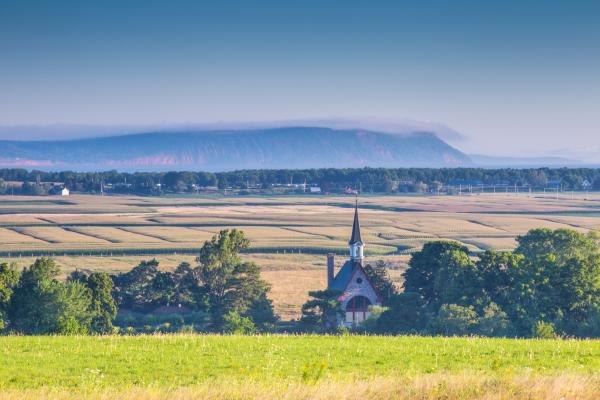To mark the 10th anniversary of the Landscape of Grand-Pré becoming a UNESCO World Heritage site, we will celebrate the rich heritage of this landscape which features an exceptional traditional agricultural settlement still in use today and an iconic place of memory for the Acadian diaspora.
Le « marais » de Grand-Pré et les sites archéologiques, situés dans la partie méridionale de la baie Minas en Nouvelle-Écosse, constituent un paysage culturel qui témoigne du développement de la poldérisation agricole réalisée – à base de digues et d’aboiteaux (buses de bois pour l’évacuation des eaux) – par les Acadiens au XVIIe siècle et poursuivie par les Planters et les habitants actuels.
Sur 1 300 hectares, le paysage culturel comprend un polder agricole étendu et des éléments archéologiques des villes de Grand Pré, fondée par les Acadiens, et de Hortonville, bâtie par leurs successeurs anglais.
Le paysage constitue un exemple exceptionnel de l’adaptation des premiers colons européens aux conditions de la côte atlantique nord-américaine grâce à l’aide et au soutien indispensable du peuple Mi’kmaw. L’endroit est aussi un lieu de mémoire symbolique majeur pour les Acadiens.
En 2012 le Paysage de Grand-Pré est devenu le 16e site du patrimoine mondial du Canada, inscrit par l’UNESCO et 2022 marquera les 10 ans de cette inscription.

